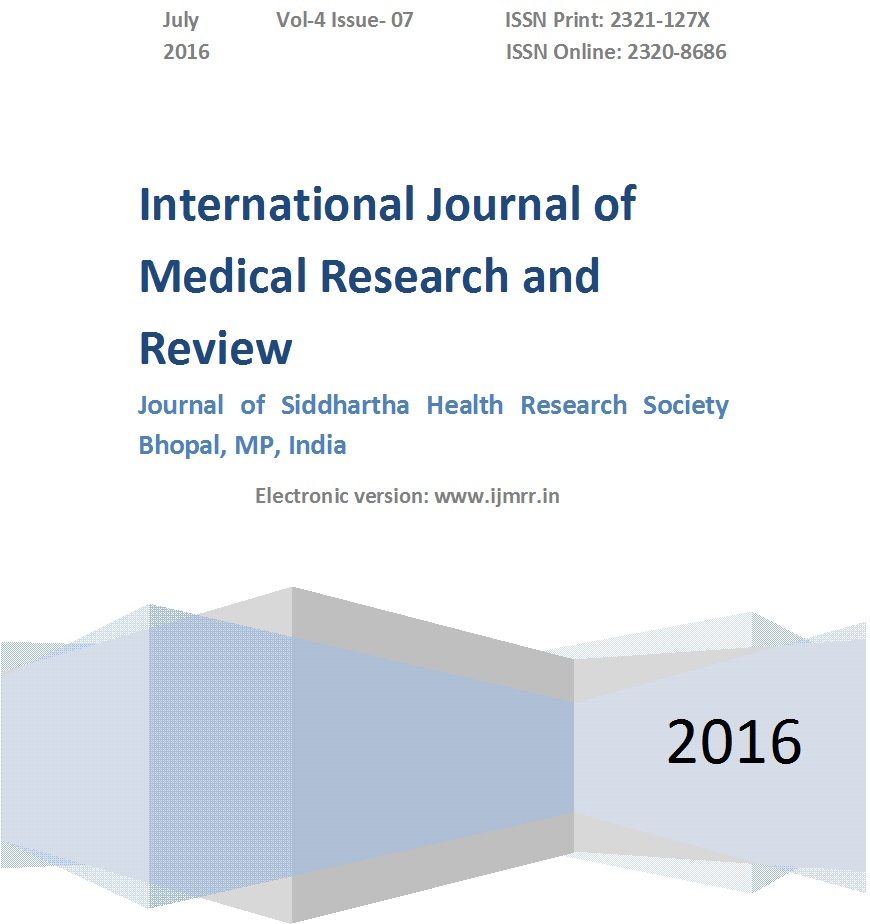A clinicopathological study of ascites with special reference to malignant etiology in a tertiary care hospital in Kolkata
Abstract
Introduction: Ascites is one the most common presenting complaints in tertiary care hospitals. Cirrhosis accounts for majority of cases of ascites. Cardiac ascites, peritoneal carcinomatosis, and "mixed" ascites resulting from cirrhosis and its complications account for rest of the cases. Less common causes of ascites include massive hepatic metastasis, infection (tuberculosis, Chlamydia), pancreatitis, and renal disease (nephrotic syndrome). Hepatitis B virus (HBV) infection, hepatitis C virus (HCV) infection, and alcoholic liver disease are the main causes of cirrhosis in India and rest of the world.
Aim and objective: The aim of the study is to explore the etiopathology of ascites in the patients who were admitted to a tertiary care hospital in eastern India.
Materials and methods: A hospital based cross-sectional study is conducted over a period of one year in Medical College and Hospital, Kolkata. 100 patients of ascites above 18yrs of age were studied. Clinico-pathological, hematological and biochemical parameters along with imaging findings were documented and were presented in tabular, graphical and statistical means.
Results: In our study the most common causes of ascites found were alcoholism (36%) followed by malignant ascites (18%). It was also observed that most of the patients were between 40-60 years with male preponderance. Amongst malignant causes of ascites HCC (44.44%), ovarian carcinoma (33.33%),colon carcinoma(11.11%), both gastric carcinoma and massive liver metastasis accounts for 5.55% each.
Conclusion: The study highlights alcohol as the common culprit cause for ascites, labels HCC as the most common cause of malignant ascites, and defines the clinico-pathological, biochemical and imaging characteristics of different etiologies of ascites
Downloads
References
API Textbook of Medicine, Editors: Yash Pal Munjal.
Philippe Langlet, Sylvie Escolano, Dominique Valla et al. Clinicopathological forms and prognostic index in Budd-Chiari syndrome. Journal of Hepatology,Issue 4:496-499.doi: https://doi.org/10.1016/s0168-8278(03)00323-4.
Hwangbo Y .ET AL; Etiological and laboratory analysis of ascites in patients who underwent diagnostic paracentesis.Korean J Hepatol.2007:13(2):185-195.https://www.e-cmh.org/upload/pdf/27402621.pdf.
Bhupinder Kumar, Brij Sharma, Sujeet Raina, Neetu Sharma, Dalip Gupta, Kavita Mardi. Etiology of ascites in adults living in the Hills of Himachal Pradesh, India: A hospital-based study.Chrismed Journal of Medical Research.Year2016.Volume:3 Issue: 1: Page: 41-44.doi: http://www.cjhr.org/text.asp?2016/3/1/41/172398.
Bindu CB, Uday Nayak. Clinical study of ascites with special reference to Serum-Ascitic Albumin Gradient. Int J Med Sci Public Health. 2014; 3(2): 169-172.http://www.ijmsph.com/fulltext/67-1384156520.pdf.
Ayantunde AA, Parsons SL. Pattern and prognostic factors in patients with malignant ascites: a retrospective study. Ann Oncol 2007; 18(5): 945 - 9.doi: https://doi.org/10.1093/annonc/mdl499.
Sherlock’s Diseases of the Liver and Biliary System, Twelfth Edition. Edited by James S. Dooley, Anna S.F. Lok, Andrew K. Burroughs, E. Jenny Heathcote. © 2011 by Blackwell Publishing Ltd. Published 2011 by Blackwell Publishing Ltd.doi: https://doi.org/10.1002/9781444341294.
Mendenhall CL.Alcoholic hepatitis.Clin Gastro enterol,1981 May;10(2):417-441.
Garrison R.N., Kaelin L.D., Galloway R.H., Heuser L.S. Malignant ascites: Clinical and experimental observation. Ann. Surg. 1986;203:644–644.doi: https://doi.org/10.1097/00000658-198606000-00009.
Kuiper JJ, van Buuren HR, de Man RA. Ascites in cirrhosis: a review of management and complications.Neth J Med. 2007 Sep. 65(8):283-8.http://www.njmonline.nl/article.php?a=561&d=354&i=94.



 OAI - Open Archives Initiative
OAI - Open Archives Initiative


